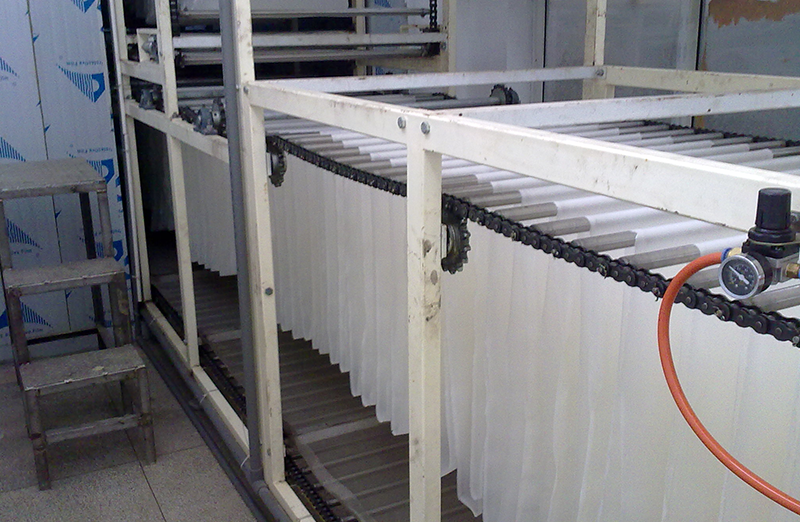Maintaining a dried noodle machine is essential to ensure its optimal performance and longevity. Here are some specific maintenance requirements typically associated with such machines:
Regular Cleaning: Thorough cleaning of the dried noodle machine is imperative not only for food safety but also for preserving the integrity of the equipment. After every use, initiate a meticulous cleaning regimen. Disassemble the machine meticulously, ensuring that all removable parts are accessible for cleaning. Utilize food-grade cleaning agents and brushes to scrub away any dough remnants, flour, or other residues that may have accumulated during operation. Pay meticulous attention to detail, especially in crevices and areas prone to buildup. Following the cleaning process, rinse all components thoroughly with clean water to eliminate any lingering cleaning agents. It's crucial to allow all parts to air dry completely before reassembling the machine to prevent the growth of bacteria and mold.
Lubrication: Lubrication serves as the lifeblood of the dried noodle machine, mitigating friction and wear among its moving parts. Consult the manufacturer's guidelines meticulously to identify the specific lubrication points throughout the machine. Utilize lubricants recommended by the manufacturer and administer them sparingly, ensuring that excess lubricant is wiped away to prevent contamination of the dough or noodles. Establish a regular lubrication schedule to ensure consistent performance and longevity of the machine, with particular attention paid to high-wear components such as gears, bearings, and rollers.
Inspecting Wear Parts: Vigilant monitoring of wear parts is essential to preemptively identify signs of deterioration and address them before they compromise the machine's functionality. Implement a routine inspection schedule, employing both visual examination and precision measurement tools to assess the condition of critical components such as blades, rollers, and belts. Any indications of wear, including uneven surfaces, fraying, or diminished performance, should prompt immediate action. Utilize genuine spare parts sourced directly from the manufacturer or authorized distributors to ensure compatibility and optimal performance.
Tension Adjustment: Proper tensioning of belts and chains is paramount to maintain the machine's efficiency and prevent operational issues such as slippage or misalignment. Familiarize yourself with the manufacturer's specifications for tension adjustment and utilize the designated tensioning mechanisms accordingly. Establish a routine schedule for checking and adjusting tension levels, especially following periods of heavy usage or when environmental factors may influence tension, such as temperature fluctuations or humidity levels.
Temperature Control: If the dried noodle machine incorporates heating elements for the drying process, meticulous temperature control is imperative to achieve consistent results and ensure food safety. Employ calibrated thermometers or temperature sensors to monitor the temperature accurately throughout the drying chamber. Regularly calibrate temperature controls to maintain precision and reliability. Implement a rigorous cleaning regimen for heating elements to prevent the accumulation of residue, which can compromise heat distribution and pose sanitation concerns.
Electrical Components: Electrical components play a pivotal role in the operation of the dried noodle machine, necessitating meticulous attention to their maintenance and safety. Conduct routine inspections of wiring, connectors, switches, and other electrical elements to identify signs of wear, damage, or degradation. Address any issues promptly, replacing damaged components with genuine parts and ensuring all electrical connections are secure and properly insulated. Implement a schedule for periodic testing and maintenance of electrical systems to mitigate the risk of electrical hazards and ensure uninterrupted operation.
INSTANT RICE NOODLE/DRIED RICE NOODLE PRODUCTION LINE
 2024.04.01
2024.04.01
 Industry News
Industry News
